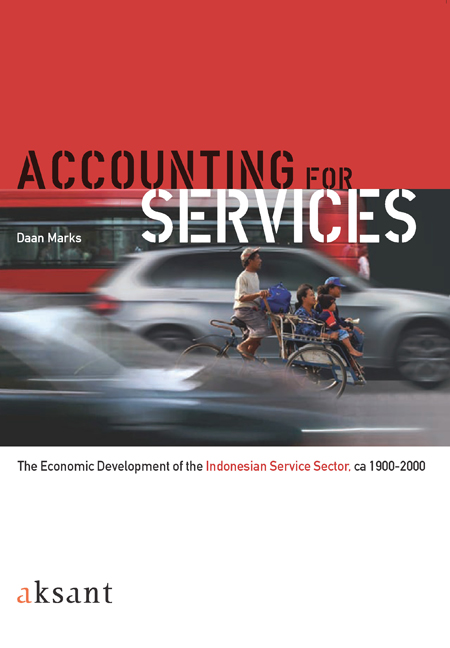Book contents
- Frontmatter
- Contents
- List of Tabels
- Acknowledgement
- 1 Introduction
- 2 National Accounting for Services in Indonesia
- 3 The Development of the Indonesian Service Sector: A Quantitative Analysis
- 4 Roads to Riches? Transportation and Economic Development in Indonesia
- 5 Involution and Growth: the Ambiguous Role of the Trade Sector in the Economic Development of Indonesia
- 6 Unity or Diversity?: Market Integration through Trade and Transport
- 7 Conclusions
- Appendices
- References
Appendix 7 - Employment and Population
Published online by Cambridge University Press: 19 January 2021
- Frontmatter
- Contents
- List of Tabels
- Acknowledgement
- 1 Introduction
- 2 National Accounting for Services in Indonesia
- 3 The Development of the Indonesian Service Sector: A Quantitative Analysis
- 4 Roads to Riches? Transportation and Economic Development in Indonesia
- 5 Involution and Growth: the Ambiguous Role of the Trade Sector in the Economic Development of Indonesia
- 6 Unity or Diversity?: Market Integration through Trade and Transport
- 7 Conclusions
- Appendices
- References
Summary
As discussed in chapters 2 and 3, for Indonesia there are a number of sources on labour force statistics. However, due to differences in concepts, procedures and seasonal timing, they lack consistency. Therefore I follow the method employed by Timmer and De Vries (2007) and rely solely on population censuses. Timmer and De Vries use these censuses as benchmarks to which they apply trends from the labour force surveys. These population censuses, which have been held in 1930, 1961, 1971, 1980 and 1990 and 2000, are considered of reasonable quality.
The 1905 data are based on a population count in that year. These data have to be treated with caution, since they are believed to be of poor quality in absolute terms resulting in an under-estimation of the number of people in most sectors. For this a correction had to be made. Therefore it was assumed that the labour force participation rate was equal to that in 1930 and 1961, namely 34 per cent, and that the 1905 population count does give a reliable picture of the relative distribution of the labour force across sectors. Or in formula:
Labour force participation rate (=34 per cent) x population in 1905 x relative sectoral share of employment in 1905 population count.
The resulting time-series of the occupational structure are presented in table A7.1. The size of the population is also given in table A7.1 and is taken from Van der Eng (2002) .
- Type
- Chapter
- Information
- Accounting for ServicesThe Economic Development of the Indonesian Service Sector, ca 1900–2000, pp. 313 - 320Publisher: Amsterdam University PressPrint publication year: 2009



